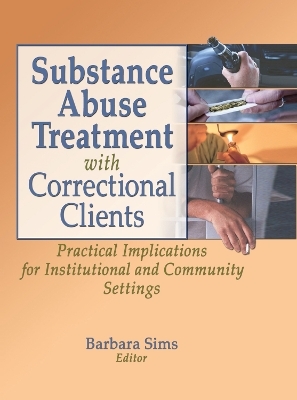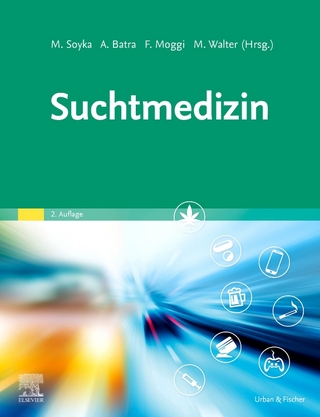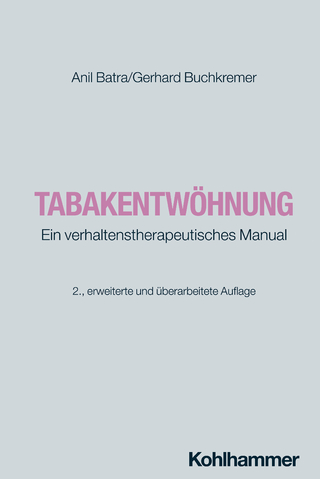
Substance Abuse Treatment with Correctional Clients
Routledge (Verlag)
978-0-7890-2126-7 (ISBN)
Substance Abuse Treatment with Correctional Clients: Practical Implications for Institutional and Community Settings provides key research findings and policy implications for treating alcohol- and drug-addicted correctional clients. This book addresses a range of critical issues associated with delivering treatment in institutional and community settings. The critical thinking questions, tables, extensive bibliographies, and name and subject index will help academics and practitioners in criminal justice, sociology, counseling/psychology, and public policy.
Substance Abuse Treatment with Correctional Clients shares the practical knowledge of researchers and practitioners in the fields of drug and alcohol addictions, substance abuse counseling, and criminal justice. The first section provides a review of the theoretical explanations for substance abuse, best practice treatment programs for substance abusers, and the use of coerced/mandated treatment. The second section addresses the substance-addicted offender in the institutional setting, the third includes works that describe community-based treatment programs and the problems associated with them, and the fourth looks at special treatment populations, including juveniles and adolescent females.
In Substance Abuse Treatment with Correctional Clients, you will find:
reviews of various types of treatment programs being used to treat substance-addicted individuals
a study of the predictors of success and/or failure in corrections-based substance abuse programminghow to identify and use the predictors to prevent relapse
arguments for and against coerced treatment in the correctional environment, and the concept of motivation
a thorough investigation of the therapeutic community (TC) program for institutional-based substance abusers
descriptions of treatment programming designed specifically for substance abusing community corrections clientsdrug courts and Pennsylvania’s Restrictive Intermediate Punishment treatment program
Substance Abuse Treatment with Correctional Clients guides you through the major policy issues faced by those who provide substance abuse treatment under what can only be described as coercive circumstances. In this important resource, you will discover major treatment modules as well as advice for working with adult, juvenile, and male or female offenders. This book provides you with the techniques that treatment communities need for helping offenders stay clean after they re-enter the community environment.
Letitia C Pallone
About the Editor
Contributors
Preface
Introduction (Barbara Sims)
PART I: THE NATURE OF THE PROBLEM
Chapter 1. Treating the Substance-Addicted Offender: Theory and Practice (Barbara Sims)
Theoretical Explanations for Alcohol and Drug Abuse
Treating Substance Addiction
Implications for the Correctional Environment
Discussion Questions
Chapter 2. Predictors of Success and Failure in Correctional-Based Treatment Programs (James W. Golden and Barbara Sims)
History of Mental Health Problems
Low Education Levels and Negative Self-Concept
Gender-Specific Risks
Dynamics of the Group Setting
Length of Time in Treatment
Postrelease Aftercare Programming
Summary and Conclusions
Discussion Questions
Chapter 3. Treatment Motivation Characteristics of Offenders Who Abuse Substances (Robert A. Shearer)
Compliance versus Internalization
URICA Research
Resistance to Treatment
Summary and Conclusions
Discussion Questions
PART II: INSTITUTIONAL-BASED TREATMENT PROGRAMS
Chapter 4. A Critical Examination of Failures in a Therapeutic Community: Snatching Defeat from the Jaws of Victory (James W. Golden)
Substance Abuse Treatment in the Institutional Setting
Methodology for the Present Study
Data Analysis and Findings
Summary and Conclusions
Discussion Questions
Chapter 5. A Qualitative Exploration into a Prison Substance Abuse Treatment Program: I Tell Them What They Want to Hear (Allan L. Patenaude)
Therapeutic Communities in Prison Environments
Qualitative Research Among Prison Inmates
Methodology for the Present Study
Major Findings
Honesty Within Treatment Programs
Summary and Conclusions
Discussion Questions
Chapter 6. Residential Substance Abuse Treatment Programming: What Do the Inmates Think? (Mary K. Stohr, Craig Hemmens, Jed Dayley, Diane Baune, Kristin Kjaer, Mark Gornik, and Cindy Noon)
Research on Correctional Programming
RSAT at SICI
Methods
Findings and Analysis
Conclusions and Policy Recommendations
Discussion Questions
Appendix: Ohio RSAT Client Questionnaire
PART III: COMMUNITY-BASED TREATMENT PROGRAMS
Chapter 7. Effects of a Drug Diversion Court on Client Recidivism (Debbie S. Cunningham and William E. Stone)
Drug Court Operations
The Present Study
Major Findings
Summary and Conclusions
Discussion Questions
Chapter 8. Setting the Stage for Treating Drug Court Clients: How to Initiate Treatment (Robert Walker and TK Logan)
Key Components of Drug Courts
Foundation for Understanding Substance Abuse and Crime
The Counselor-Client Relationship
Managing the Pretreatment Context for Counseling
Summary and Conclusions
Discussion Questions
Chapter 9. Restrictive Intermediate Punishment Programming: A Community-Based Treatment Program for Substance-Addicted Correctional Clients (Barbara Sims and M.A. Toni DuPont-Morales)
Review of the Literature
Pennsylvania’s Restrictive Intermediate Punishment Program
The Present Study
Summary and Conclusions
Discussion Questions
PART IV: SPECIAL TREATMENT POPULATIONS
Chapter 10. Treating Juvenile Substance Abuse in the Institutional Setting (Brian A. Glaser and Paul J. Cohen)
Review of the Literature
A Description of the Juvenile Counseling and Assessment Program (JCAP): A Short-Term Treatment Program for Substance-Abusing Youth
Summary and Conclusions
| Erscheint lt. Verlag | 14.3.2005 |
|---|---|
| Verlagsort | New York |
| Sprache | englisch |
| Maße | 148 x 210 mm |
| Gewicht | 670 g |
| Themenwelt | Medizin / Pharmazie ► Medizinische Fachgebiete ► Suchtkrankheiten |
| Recht / Steuern ► Strafrecht ► Kriminologie | |
| ISBN-10 | 0-7890-2126-9 / 0789021269 |
| ISBN-13 | 978-0-7890-2126-7 / 9780789021267 |
| Zustand | Neuware |
| Haben Sie eine Frage zum Produkt? |
aus dem Bereich


